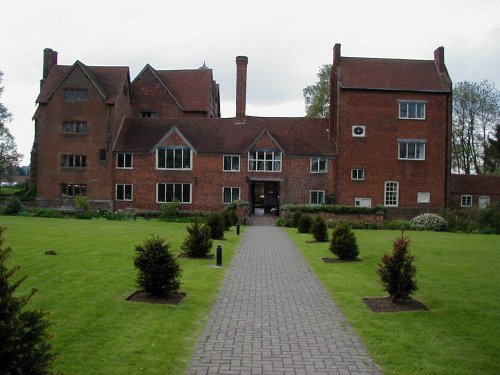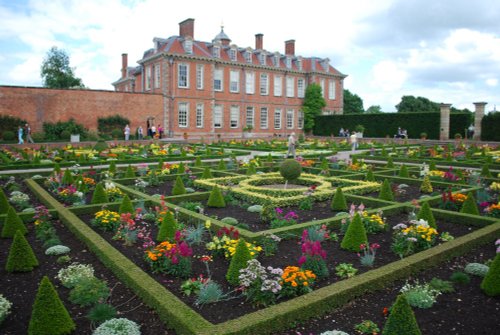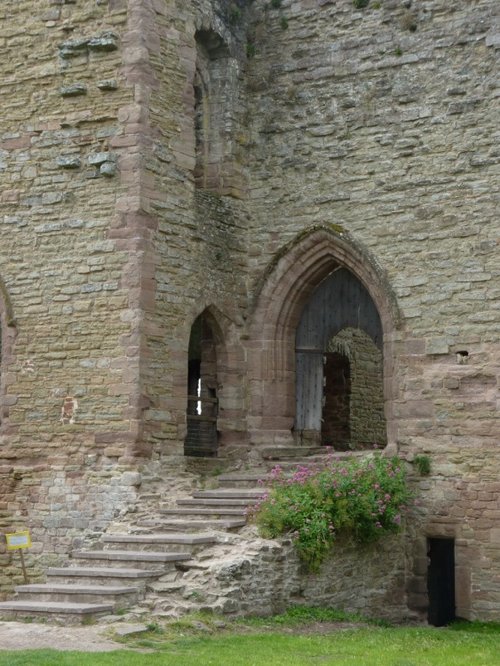Pictures of Great Witley
About Great Witley
The great palladian mansion of Witley Court and the splendid Baroque Church that lies within its grounds have been central to the life of the rural village of Great Witley for centuries.
The church of St.Michael and all Saints stands beside the gaunt ruin of Witley Court. Since medieval times a church has stood on this site and, early in the 18th-century the decision was taken to replace the old church with the one we see today. Consecrated in 1735, the church was built the same size as the old building. The exterior of the hall-like structure belies the richness and splendour of the interior. Hallowed as this place is, it provides visitors and worshippers alike with a surprising excursion into rococo style. The magnificent stained glass windows are said to date from 1719 and were bought by Lord Foley of Witley Court from the chapel that once stood in the grounds of the great house 'Cannons' built for the Ist Duke of Chandos, in the ountry village that once, was Edgware. The windows were made by Joshua Price from designs by Sebastiano Ricci. There is exquisite gilded decoration throughout and there are numerous paintings by Antonio Bellucci. There is a fine organ, and it is thought that the organ case may also once have been at Cannons. Standing in the north transept is a monument to the I(st Lord Foley by Michael Rysbrack, who was a sculptor of renown in the early 18th-century. A visit to this sumptuous little church is a mesmorising experience, it is of a rare beauty normally reserved for the larger churches of London, Venice and Rome. This is a church to cherish and the good people of Great Witley are fortunate indeed to have it within their midst.
Witley Court itself has a colourful history. The house was first bought by Thomas Foley, son of a wealthy family of Stourbridge ironmasters, who went to live there in 1655. It was owned by this illustrious family for almost two centuries during which time thay expanded both the house and the beautiful parkland in which it stood. In the early 19th-century, it was sold to William, 11th Baron Ward, who later became the first Earl of Dudley. Interestingly, it was bought for him when he was quite young and for several years he remained living with his family and the house was rented out to the widowed Queen Adelaide, wife of King William IV. From this point on Lord Ward set about creating for himself a mansion of magnificent proportions.
The house took on the opulent Second-Empire style. There were to be 100 bedrooms, beautiful sweeping staircases, carved balustrades and columns. There were elegant Salons and a grand banqueting hall. A vast fortune was spent on both house and parkland which was furnished with sumptuous statues and spectacular fountains.
Thus, Witley Court became one of the foremost country estates of late Victorian and Edwardian times. The Prince of Wales, who later became Edward VII, the uncrowned King, was a frequent visitor to Witley Court, he was often joined by Freda Dudley-Ward who is reputed to have been his mistress for several years, it is said that Mrs. Simpson stayed there too. These were the years of Witley's hey-day when great hunting and shooting parties were held, magnificent dinners given, they were day's of brilliance, when rich aristocrats and fashionable people danced gaily through an idyllic lifestyle they thought would never end. But the years betwen the two world wars changed everything. The family fortunes declined and in 1920 Witley Court was sold.
Herbert Smith, a Kidderminster carpet manufacturer, bought Witley Court and it's 800 acres of parkland. Sadly, he was not to own the estate for long for in 1937 the building was ravaged by a disastrous fire and was left to become the romantic ruin we see today.
Latterly, English Heritage has taken on responsibility for Witley Court and Parkland. The magnificent fountain in the grounds has been restored but no plans appear to exist for restoration of the house. The fountain plays at various times throughout the day when the parkland is open to the public. The beautiful little church belongs solely to the Church of England and access to this is either through the grounds of Witley Court or directly from the main Tenbury Road.
The countryside around these parts is mainly rural and the pretty town of Stourport-on-Severn is just a short distance away as is the town of Tenbury Wells where you will find quaint shops, delightful pubs and inns and a wealth of antique shops and centres.






